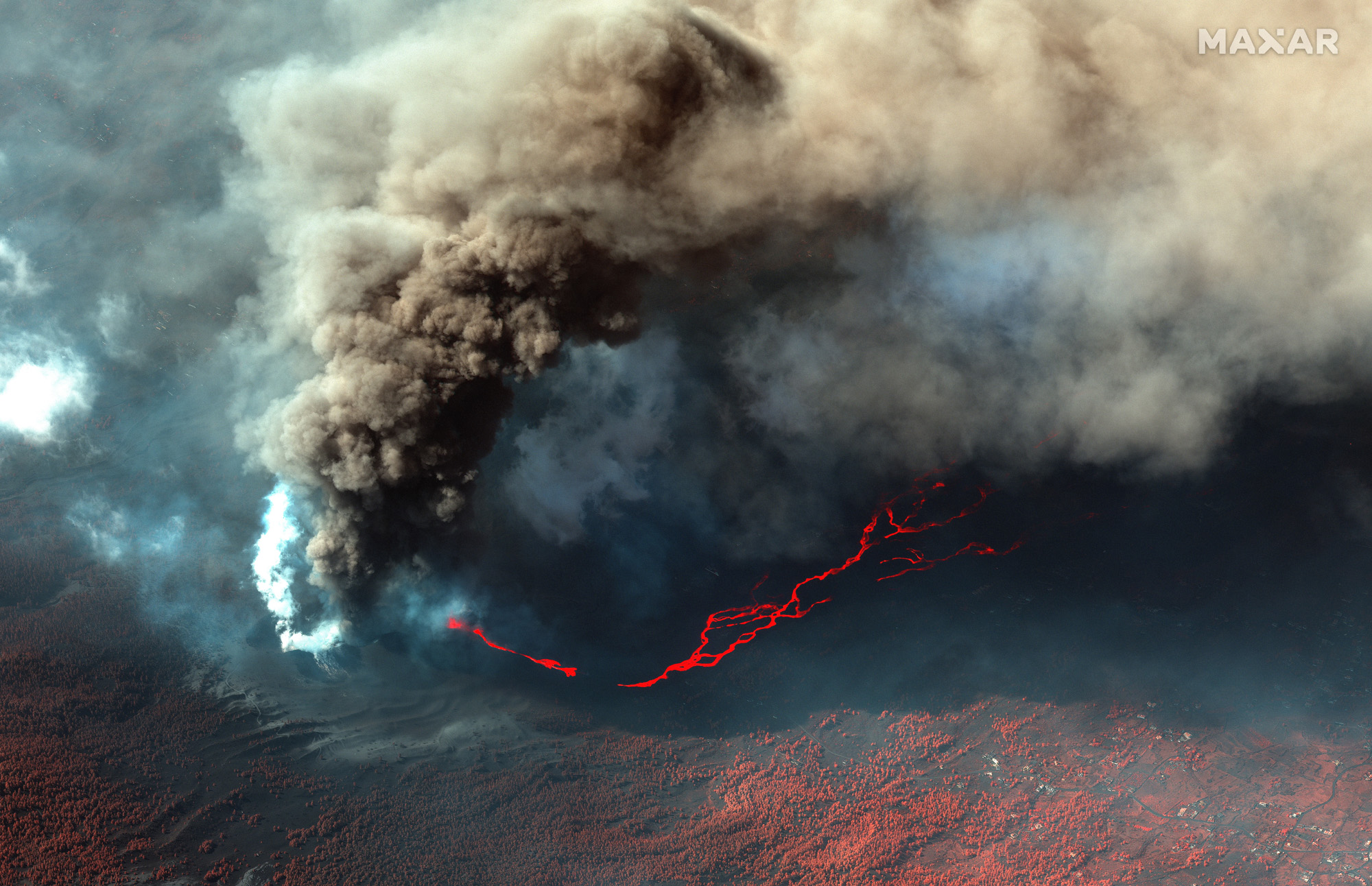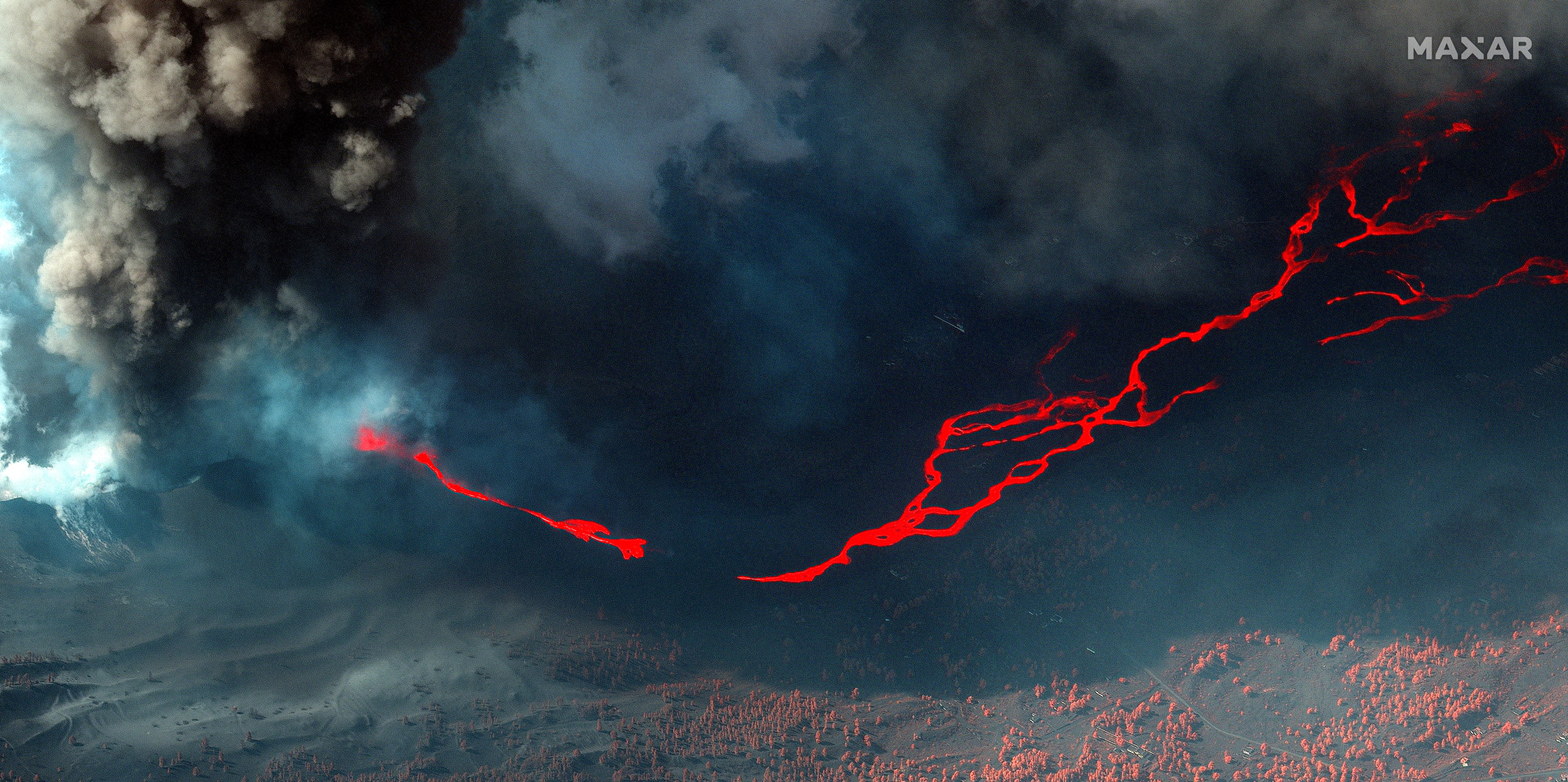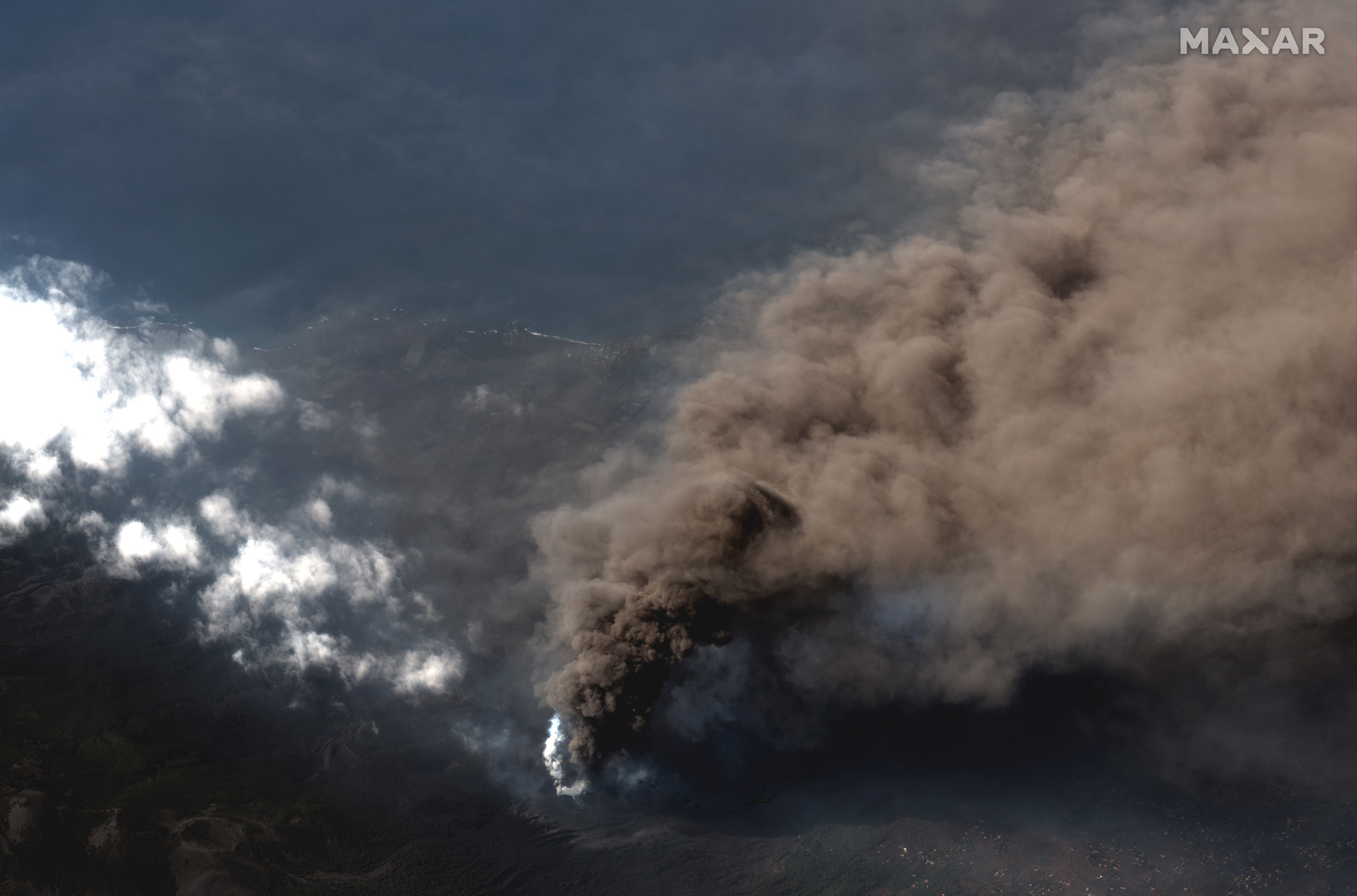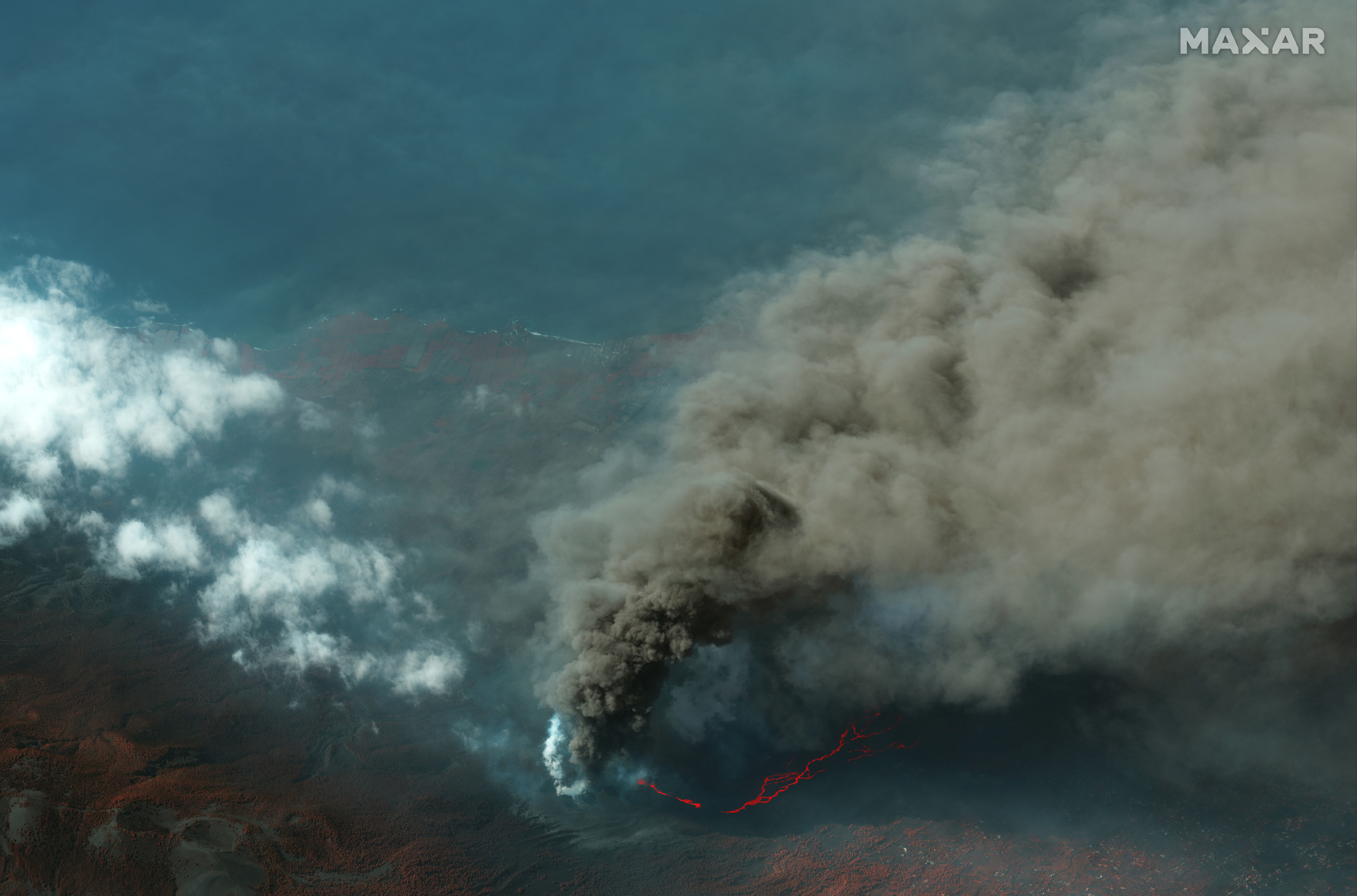Vast lava rivers from La Palma volcano eruption show no signs of stopping in new satellite photos
A lava 'tsunami' from the volcano was spotted by ground observers on Friday, Oct. 15
New high-resolution satellite images of Spain's La Palma island reveal lava rivers spilling from the island's Cumbre Vieja volcano as its devastating eruption shows no signs of stopping nearly a month after it began.
The images, captured by a satellite of the U.S. Earth observation company Maxar Technologies on Thursday (Oct. 14), show the thick plume of smoke rising from Cumbre Vieja volcano crater, forming a dark heavy cloud above the island. Glowing streams of lava flow down the flank of the mountain range towards the coast, bulldozing everything in their path.
Related: 10 incredible volcanoes in our solar system




"The lava is forming a huge delta on the La Palma coast and has claimed around 98 acres (40 hectares) of new land from the Atlantic Ocean," Maxar representatives wrote in a Twitter image description.
The Canary Islands Volcanology Institute (Involcan) shared terrifying footage from the ground on Friday (Oct. 15), capturing a fast moving stream of scorching lava running past abandoned buildings.
"One of our crews was able to film a real lava "tsunami" today," Involcan tweeted. "Impressive speed and overflow of the lava channel."
Related: Striking bull's-eye-shaped clouds form above erupting La Palma volcano
Get the Space.com Newsletter
Breaking space news, the latest updates on rocket launches, skywatching events and more!
Uno de nuestros equipos ha podido filmar hoy un verdadero "tsunami" de lava. Impresionante velocidad y desborde del canal lávico / today one of our crew was able to film a truly lava "tsunami". Amazing speed and overflow of the lava channel. pic.twitter.com/aoKiUSJ2bXOctober 14, 2021
But the infernal spectacle is far from entertaining for locals. According to the European Union's Copernicus Emergency Monitoring Service, 1,817 buildings have perished in the boiling lava since the beginning of the eruption on Sept. 19. More than 2.8 square miles (7.3 square kilometers) of land have been submerged while the volcano keeps spewing more and more lava.
The eruption intensified over the past weekend after part of the Cumbre Vieja crater collapsed on Saturday (Oct.9), allowing the lava to spill in new directions. Boulders the size of a house were seen rolling down from the crater as new lava streams quickly found their path towards the coast of the Atlantic Ocean, destroying settlements that had been spared the original outflow.
According to the Guardian, local authorities ordered about 300 people to evacuate their doomed homes in the towns of Tazacorte and La Laguna on Thursday (Oct. 14), giving them only a few hours to collect their belongings and pets.
#EUSpace for #ErupciónLaPalma@CopernicusEMS has released its 2️⃣1⃣st Monitoring product for the #LaPalma #CumbreVieja eruption The maps shows (as of 14 October at 19:02 UTC)➡️Extent of the lava flow: 732.5 ha🌋(+52.1 ha in 24h)➡️1,817 destroyed buildings detected🏠(+269) pic.twitter.com/XDV9whmV2dOctober 15, 2021
In the meantime, the cloud of sulfur dioxide emitted by the volcano is spreading over Europe, reaching altitudes of up to 3.1 miles (5 kilometers), according to the Copernicus Atmosphere Monitoring Service (CAMS). It is expected to cross Europe from west to east over the coming days, CAMS senior scientist Mark Parrington said on Twitter.
The Cumbre Vieja volcano woke up on Sept. 19 after 50 years of silence. Over 20,000 mild earthquakes alerted geologists and local authorities in the week prior to the eruption to the magma rising inside the volcano. Experts fear the eruption may continue for months.
Follow Tereza Pultarova on Twitter @TerezaPultarova. Follow us on Twitter @Spacedotcom and on Facebook.
Join our Space Forums to keep talking space on the latest missions, night sky and more! And if you have a news tip, correction or comment, let us know at: community@space.com.

Tereza is a London-based science and technology journalist, aspiring fiction writer and amateur gymnast. Originally from Prague, the Czech Republic, she spent the first seven years of her career working as a reporter, script-writer and presenter for various TV programmes of the Czech Public Service Television. She later took a career break to pursue further education and added a Master's in Science from the International Space University, France, to her Bachelor's in Journalism and Master's in Cultural Anthropology from Prague's Charles University. She worked as a reporter at the Engineering and Technology magazine, freelanced for a range of publications including Live Science, Space.com, Professional Engineering, Via Satellite and Space News and served as a maternity cover science editor at the European Space Agency.









